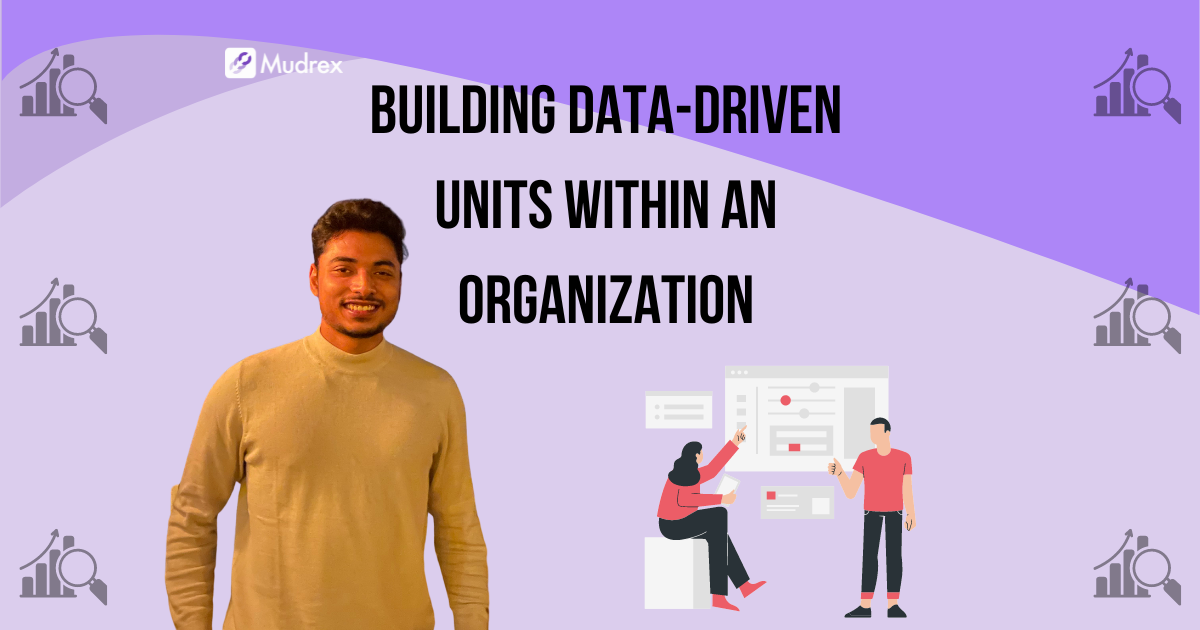Introduction
Data is the new OIL. In the rapidly evolving business landscape of the 21st century, the ability to make quick, accurate, and effective decisions has never been more critical. Organizations across industries are increasingly relying on data as the cornerstone of their initiatives to optimize operations, innovate products, and outperform competitors.
Why are data driven decisions superior?
Data-driven decision-making offers a significant edge by determining choices in quantifiable, verifiable data, thereby reducing guesswork and subjectivity. Successful companies often use data as a strategic asset. In sheer contrast, relying on intuition or outdated methods can lead to costly missteps.
To drive my point here further, this table helps:
| Data-Driven Decisions | Intuition-Based Decisions | |
|---|---|---|
| Based on | Empirical evidence, data analysis | Personal experiences, emotions, and/or subjective interpretations |
| Optimality | Consistent and replicable, can be applied across different scenarios with predictable outcomes | Prone to inconsistencies, most likely biased leading to less optimal choices |
| Scalability | Quickly incorporate new data and adjust to changes in user preferences or market requirements | Do not easily scale across larger operations as they rely heavily on individual expertise and judgment |
How do we get started?
Most companies fail to do this. Fostering a data-driven culture is hard, and requires training, consistent efforts and investment in resources. Building and sustaining data-driven units must be seen as a strategic goal that requires commitment across all levels of an organization.
- Strategic Vision from LeadershipExecutives should lead by integrating data-driven decision-making across daily catchups, high-level strategy meetings and major company decisions. Google’s use of OKRs is a prime example where strategic goals are set with quantifiable results.
- Mid-Level Management’s RoleMid-level managers should be trained to utilise the tools and resources at their disposal to translate data insights into actionable strategies and decisions. Ocado, an online grocery retailer, leverages real-time data to manage inventory and optimize delivery routes, making mid-level managers pivotal in the execution of data-driven logistics and inventory control.
- Empowerment of Individual ContributorsEfficient systems need to be set up that allow frontline employees to have access to data that impacts their work directly. Nordstrom, for example, uses data to track customer preferences and shopping habits, allowing salespeople to offer personalised recommendations, thus improving customer experience and increasing sales.
Creating and driving data-driven units
Establishing a data-driven culture is a transformative process for any organization, requiring the integration of new tools and technologies and a fundamental shift in mindset and operations.
Adopting data-centric conversations
In a truly data-driven organization, discussions are anchored in data insights. This requires:
- Regular Data Reviews: This practice encourages reliance on data insights and promotes a shared understanding of what the problems and goals now are.
- Accessible Data Dashboards: This helps in democratizing data access and enables informed discussions across the board.
- Encouragement of Curiosity: An environment where employees feel encouraged to ask questions about the data available and explore its implications. This leads to deeper insights and more innovative solutions to problems.
- Comprehensive Training Programs: Training sessions that cover basic data literacy to more advanced analytics techniques, depending on the roles of the employees.
Leveraging Resources to Support Data-Driven Practices
The shift to a data-driven culture is supported by strategic investments in resources across three main categories:
- Human Resources: Data specialists such as data scientists, analysts, and data-savvy managers is crucial. Deploying human resources to build an easy to use and access data-stack for the organisation is also super important.
- Capital Investment: Allocating budget and employee bandwidth for the implementation of advanced software and training and development programs. Investing in data governance and data quality initiatives ensures that the data used for making decisions is accurate and reliable.
Success Stories
I have reflected on a couple of examples above where companies effectively use their data to scale their growth and operational excellence and outperform competition. Lets look at some further examples:
Starbucks
- Starbucks uses data analytics to determine the potential success of new store locations. They make informed decisions on where to open new stores by analyzing demographic data, customer traffic patterns, and economic conditions of that area. This has helped Starbucks maintain efficient expansion and profitability in an increasingly crowded marketplace.
American Airlines
- American Airlines uses data to optimize flight routes and schedules by analyzing weather data, flight booking patterns, and fuel prices. They can dynamically adjust flight plans to minimize delays and reduce costs. These optimizations lead to better customer satisfaction and operational savings.
Netflix
- Netflix famously uses data algorithms to personalize content recommendations for its users based on their past viewing habits. This approach is also a vital part of its original content production, where viewer data influences which shows and movies Netflix invests in. This has resulted in high viewer engagement rates and a strong competitive leadership in the streaming industry.
Lessons we can learn
- Integration Across Operations: Successful data-driven companies integrate data analytics into multiple aspects of their business, from strategic planning to day-to-day operations.
- Cultural Adoption: These companies cultivate a culture that values data-driven decision-making, ensuring that employees at all levels are trained and encouraged to think analytically.
- Continuous Improvement: There is a consistent effort to improve data capabilities and infrastructure, reflecting the understanding that data strategies need to evolve with time to stay effective.
Conclusion
The transformative power of data-driven strategies is evident across various industries. Companies should prioritize building robust data-driven units within their organisation, to streamline operations, reduce costs, enhance customer experiences and drive innovation.





